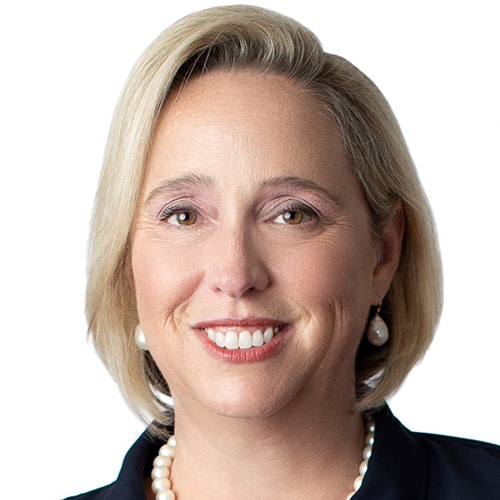We see it time and time again: The more law firms grow, the less profitable they become. How do you grow and still pay yourself first?

Table of contents
When you started your law firm, it was probably just you — and maybe a paralegal or assistant. Then more business came in, you were working crazy hours, and so you hired more people. You didn’t really care what you paid them; you just needed the help. When somebody said they needed something, you usually said fine, “Order it!” Because in the beginning, you were making really good money.
Then one day, you woke up and realized you were paying your people and lots and lots of bills — but what wasn’t getting paid was YOU.
Does this sound familiar? I see it time and time again: The more law firms grow, the less profitable they become.
The big question is:
How Do You Grow and Still Pay Yourself?
There is a great book by Mike Michalowicz called “Profit First.” He does something so simple, but it has a huge effect on the profitability of a business. He takes the standard P&L formula (Revenue – Expenses = Profit) and turns it on its head. When you plan (and you should plan), he says you should follow this formula:
Revenue – Profit = Expenses
First, decide how much you want or need to make and subtract that number from your revenue. What’s left is the amount of money you have to run your firm.
I love this theory, but the question I always hear is, “Brooke, what is reasonable for me to make? I want to take home $1 million but only have $600,000 in revenue, so that’s not going to work.”
How Much to Pay Yourself? Apply the “Rule of Thirds”
I believe in running law firms on the “Rule of Thirds.”
- One-third of the revenue goes to the people doing the work (anybody on your payroll, including taxes and benefits).
- One-third goes to overhead (rent, phone, scanner, marketing and so forth).
- One-third goes to profit.
So, if your firm collects $600,000 a year, you should be running about a $200,000 profit.
By keeping the one-third rule in mind, you can build expense and compensation plans that allow you to pay yourself.
When we apply the one-third rule, we have found a few places where expenses can get out of control and threaten profits. The first is payroll.
A Formula for Payroll
Billable people should always bill and collect 3x to 5x their employment cost, depending on their experience, skill and talent. Otherwise, you’re paying out too much (or too little).
Younger lawyers, whose only job is to bill, should bill and collect at 5x their cost.
As lawyers become more skilled, their job changes. They bill less, teach and train more, and do more with client relations and client satisfaction. Their declining billable hours are offset by their rising rate. Ultimately, these people should get about a 4x return.
Then there are the lawyers whose talent is finding new clients. They make it rain just by waking up in the morning. They usually don’t bill a lot, but, when they do, their rate reflects their knowledge and reputation. Our goal is to have these attorneys at 3x.
I’m often asked, why not pay everybody at 3x since we want one-third of profits to go to the people doing the work? There are nonbillable people in your firm, so you need other people to bill and collect enough to pay those salaries. This usually falls to the younger attorneys.
Now that you have the people expenses within (or close to) one-third of revenue, let’s look at the next place things get out of control: marketing.
How Much Should You Spend on Marketing?
Marketing expenses are part of overhead, but on its own, your marketing budget should never be at more than 10% of revenue.
We see two scenarios where marketing expenses are too high.
- The first is firms under $750,000. Most of your new cases or matters come from good old-fashioned shoe leather — meeting and greeting, one-to-one personal relationship marketing. Very often, however, we see firms at $400,000 that want to increase their leads, so they spend a lot of money on marketing. Unfortunately, they rarely have the internal systems set up to nurture these leads, so they end up spending a lot of money with little result. At that revenue level, you should only be spending 5% to 7% of your revenue on marketing.
- The second scenario is firms with more than $1 million in revenue that think the more money they throw at the internet, the more successful they will be.
Meet with your marketing team each month. If any campaign is returning less than 10x ($10 in revenue for every $1 spent), then you need to cut it.
Then There’s the Rest of Your Overhead
Generally, we find the rest of a law firm’s overhead is usually in line. There are a few things you can look at that might make a difference. If the pandemic taught us nothing else, we learned that virtual works.
- Do you need your large Class A office?
- Where are you overspending on technology?
- Are you paying for software you are no longer using? Kind of like that gym membership?
When you look through your expenses, you might find some unnecessary items to cut.
Is the One-Third Rule Set in Stone?
Of course not. It is a starting place. If you want fast growth, your marketing spend might be up for a few months. We have one client whose overhead is shockingly low, so he has decided to allocate some of that money to his people and pay them extraordinarily well. But he is still getting his one-third in profit. And sometimes, you may decide to lower your profit for a specified period while you grow. Just monitor your spending carefully, so you don’t end up back in the same cycle of paying everybody else but not yourself.
Illustration ©iStockPhoto.com
Subscribe to Attorney at Work
Get really good ideas every day for your law practice: Subscribe to the Daily Dispatch (it’s free). Follow us on Twitter @attnyatwork.





















